Discover the best things to do in Oslo with our suggested 2 days in Oslo itinerary covering the city’s cultural, architectural and natural highlights.
Our first glimpse of Norway came as we cruised through the rocky archipelago of the Oslofjord aboard a huge Stenaline ferry from Denmark. We were on the trail of the Vikings, so it felt like a fitting arrival into Oslo, even if our ferry was about thirty times the size of a Viking longboat.
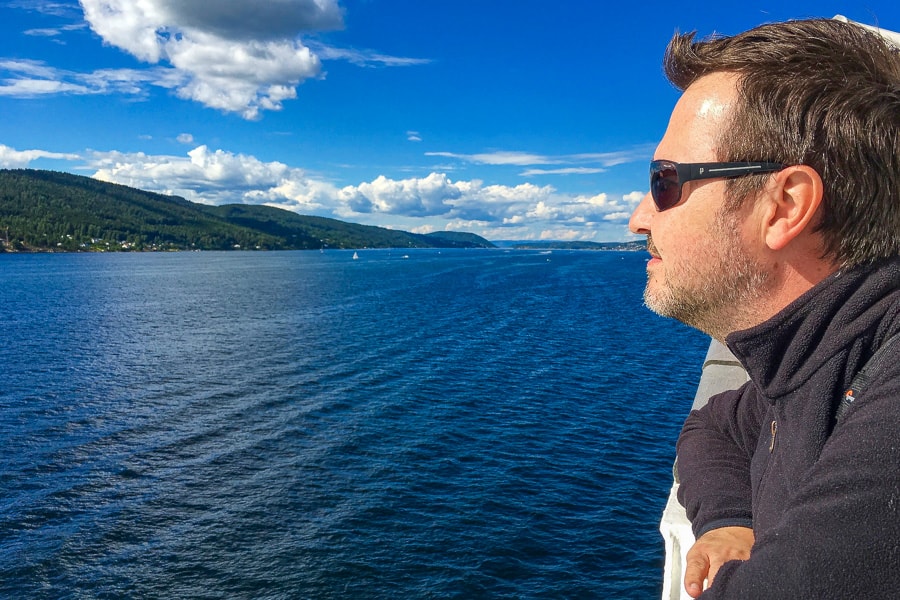
Oslo is a harbour city with a history reaching back a thousand years and a long maritime association. Vikings once had a settlement here and the shores of its lengthy fjord have been inhabited since the Stone Age. Today, it’s a hub for trade and shipping.
On land, fires and the passage of time have left few tangible remnants of Oslo’s more distant past. And while we beat a path around the city’s streets in search of its old and new glories, we found ourselves continually drawn back to the glittering harbour we’d cruised in on; because to journey onto Oslo’s waterways is to experience the place as people have been doing for millennia.
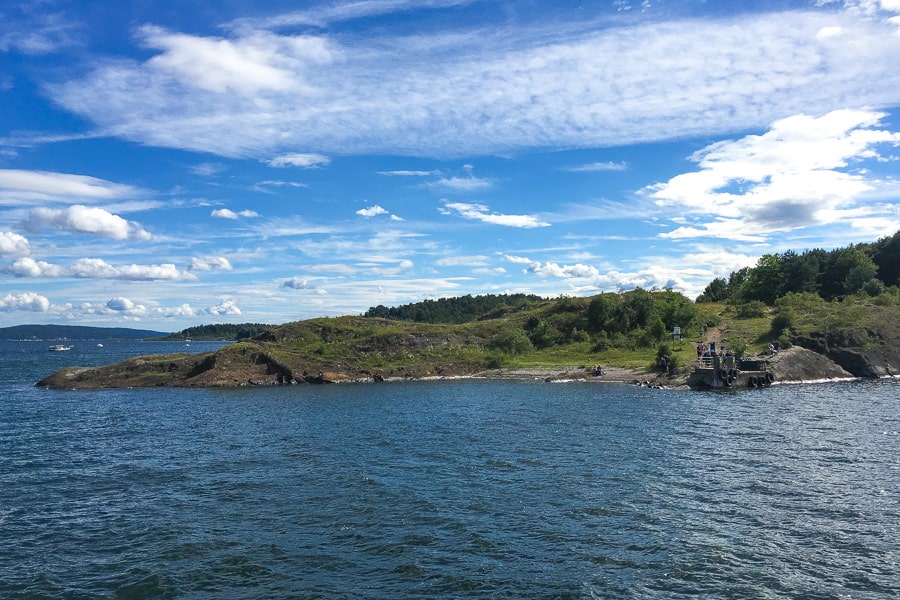
What’s in this post?
Planning a Weekend in Oslo
Getting to Oslo
Best Time to Visit Oslo
Oslo Public Transport
Where to Stay in Oslo
Car Rental in Norway
2 Days in Oslo Itinerary
Day 1: Oslo’s Cultural, Architectural and Natural Highlights
Day 2: Oslo’s Maritime Heritage and Vigeland Park
This post contains affiliate links. If you choose to buy through these links we may earn a small commission at no extra cost to you, which helps us to keep Two for the World running. Many thanks for your support!
Planning a Weekend in Oslo
Getting to Oslo
Oslo is the capital of Norway and its largest city. It’s accessible by plane from Europe, the Middle East and USA, overland via Sweden, or by ferry from Denmark, Germany and Sweden.
We cruised to Oslo with the Stenaline car ferry from Frederikshavn in Denmark, an incredibly scenic way to arrive, but long: it’s a nine-hour journey (which can be made overnight if you prefer).
Best Time to Visit Oslo
You can visit Oslo year-round, though it’s hard to go past summer. Between June and August is the best time to visit due to the warmer weather and much longer daylight hours.
Like many Scandinavian cities, Oslo comes alive during the summer period with a host of outdoor events and festivals on offer. It’s a fun time to be there, and the weather is perfect for visiting the city’s parks and markets, making the best of walking and hiking opportunities, and exploring beautiful Oslofjord.
While you may not get quite the same number of events and activities happening in the shoulder season, just before and after summer, it’s still a great time of year for an Oslo city break. There’s the added bonus of fewer visitors and slightly cheaper (but certainly not inexpensive) rooms, while still having reasonable weather.
As with most of Scandinavia, the winter months between December and March bring short days and plenty of snow. Perfect if you want to make the best of Oslo’s snow sports, Christmas markets, or just want to enjoy the wintery views from beside a cosy fire, perhaps with a vino or two.
Oslo Public Transport
An extensive network of trains, metro, trams and buses makes getting around Oslo a cinch, while a wide range of boats and ferries transport locals and visitors around the harbour and along the fjord.
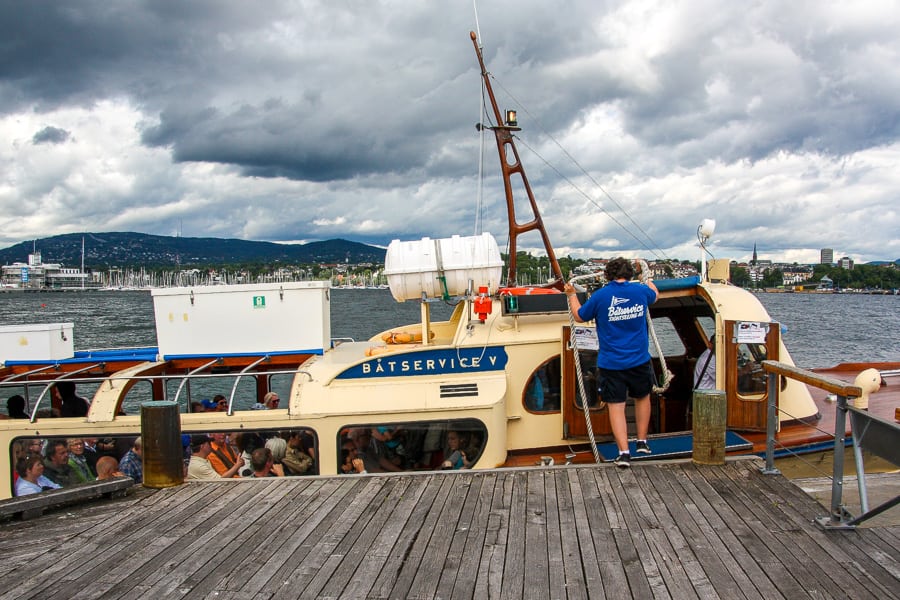
Getting from Oslo Airport to the City
Oslo’s Gardermoen Airport is just shy of 50km northeast of the city. Taking a train from Oslo airport to the city couldn’t be easier, just follow the ‘train’ signs after you’ve collected your bags and cleared customs. You’ll eventually get to an area with train departure boards and machines where you can buy tickets.
There are essentially train two options to the city, the airport express train (Flytoget), and Vy regional trains. Flytoget is marginally faster, has slightly more regular departures, and is a little more comfortable. The downside is it costs around twice the price, so we’d highly recommend taking the regional train.
Other transport options to and from the airport include the Flybussen Airport Express Coach, the OSL Express bus, and the usual selection of rideshare, taxis, shuttles and transfer services. If you want to organise a private transfer from Oslo Airport ahead of time, you can check prices here.
Get an Oslo Pass
Everything you’ve heard about prices in Norway is true: it’s incredibly expensive. And while we’re sometimes hesitant to invest in city passes (there’s a limit to the number of museums we can take in 48 hours), the Oslo Pass does help bring down the overall cost of sightseeing, even if it seems initially steep at NOK800 (US$70) for 48-hours, or NOK550 for 24 hours (2025 prices).
You can buy the Oslo Pass via the Oslo Pass app, or at a range of locations in Oslo, including the Oslo Visitor Centre, along with some hotels and museums. The Visit Oslo website has more information, including prices, inclusions, and a map of places you can buy the pass.
We used our pass to travel all over the city on public transport, including boats to Bygdøy and islands in the fjord. We also gained free entry to many sights across the city.
Where to Stay in Oslo
Perhaps our biggest challenge was in finding somewhere to stay in Oslo, and not for lack of accommodation. Unsurprisingly, Norway’s capital city has a broad range of accommodation that includes campsites, hostels, B&Bs, boutique stays, and swanky chain hotels. Just don’t expect any bargains, Norway’s expensive reputation is very well deserved.
As you only have 2 days in Oslo, consider staying in the centre of town (Sentrum) or Gamle (the old town) if you can afford the price tag and want to be within walking distance of the main sites.
If you are looking for something more bohemian, then trendy Grünerløkka with its cosy coffee shops, street art, and great eating options might be a good choice.
For fjord views, waterfront eateries, easy access to the harbour, and upscale vibes, you can’t get much better than waterfront Aker Brygge, one the best areas to stay in Oslo.
To make the best of Vigeland Park while still being close enough to town, have a look at the options in the stylish suburbs of Frogner or Majorstuen.
We stayed just east of the centre at the Scandic Helsfyr, which had well-appointed, comfy rooms and puts on a decent breakfast. The hotel has free parking, and easy access to the city via the metro, located just ten minutes’ walk away. The following options also get consistently good reviews:
- Good value: Cochs Pensjonat – near Royal Palace | clean, simple rooms | near to trams
- Good value: Citybox Oslo – central location near station | comfy beds | modern, compact rooms
- Mid-range: Clarion Hotel Oslo – modern rooms | great breakfast | central location
- Indulge: The Thief – close to Aker Brygge | fjord views | stylish modern rooms | on-site spa
Staying Longer and Need to Hire a Car
If Oslo is just the start of your visit and you plan on exploring further afield you might find our Norway Road Trip Itinerary helpful.
While it’s certainly possible to get around Norway on public transport, there’s nothing quite like having your own wheels to explore the rugged mountains, fjords, and coastal scenery that make this country so spectacular.
If you’re looking to hire a car we’d strongly advise booking as far in advance as you can to get the best rates and choice of vehicle.
DiscoverCars are our go-to car hire provider these days as it’s the website where we’ve always found the best deals. You can check prices for car hire from Oslo here.
We’d also suggest checking out our Guide to Driving in Norway page for advice on what to expect from driving in this incredible country.
2 Days in Oslo Itinerary
Day 1: Oslo’s Cultural, Architectural and Natural Highlights
We love exploring new cities by foot as we’ve always found it’s the best way to get our bearings and learn about a new place.
There are walking tours in Oslo catering to all tastes and budgets, including free and paid walking tours, self-guided audio tours, and food tours.
Some of the best Oslo tours we’ve found that get consistently great reviews include:
- Guided Walking Tour in Central Oslo: A 2 hour group tour covering all the main places of interest in central Oslo.
- Street Food Culture Walking Tour: You’ll get to try plenty of tasty street food and enjoy the murals and street art of trendy Akerselva on this 2.5 hour tour.
- Historic Myths & Legends Evening Walking Tour: A night tour that visits the city’s main landmarks while sharing some of Oslo’s history, myths and legends over two hours.
It’s also easy enough to spend the day exploring Oslo on your own self-guided tour, delving into Oslo’s distant past, while also enjoying some of the city’s cultural, architectural and natural highlights.
We’d highly recommend starting your Oslo weekend with a walking tour of some kind to get a lay of the land and introduce you to Norwegian culture. Of course if you want to save your feet, there’s always the Hop-On-Hop-Off bus tour.
Self-Guided Oslo Walking Tour
If you want to explore under your own steam, start by heading to the Royal Palace, Norway’s official royal residence. While you’re there, take a stroll through the picturesque Slottsparken, the well-maintained palace gardens. There are some lovely sculptures scattered around the grounds.
If you happen to be here in summer, consider booking a guided tour around some of the palace’s most important rooms.
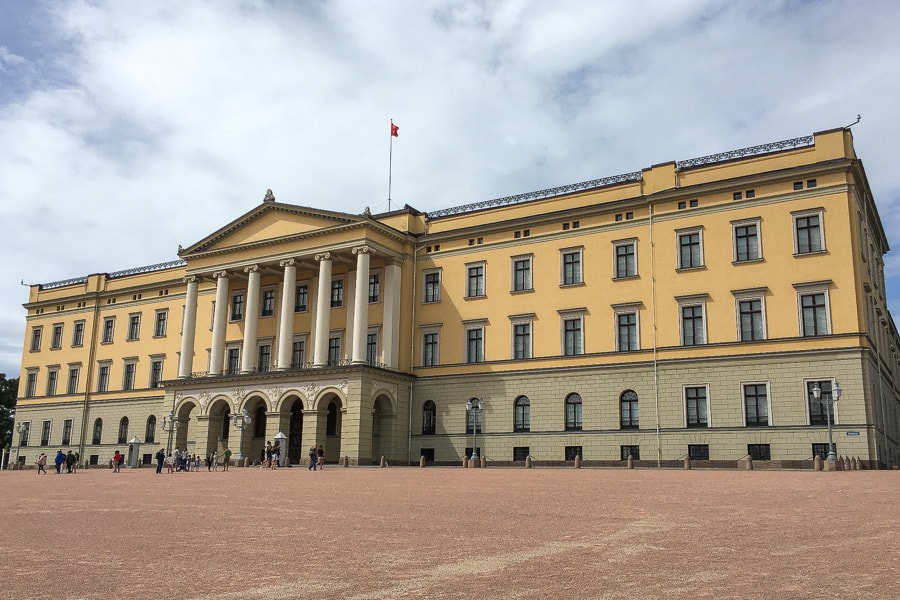
It’s a lovely walk down Karl Johans Gate, the city’s bustling main avenue, past Norway’s imposing Parliament (the Storting) to get to Oslo Cathedral. Dating back to the late 1600s, the cathedral is free to enter so take some time to enjoy this beautiful church before continuing on towards Oslo’s most iconic building, the iceberg-inspired Oslo Opera House. Keep an eye out for Oslo’s beloved Tiger Statue on the way.
We really enjoyed hanging out down by the Opera House. It’s a great spot to chill under the sun or swim at one of the city beaches, people watch, or just enjoy the views of Oslofjord.
While you’re here though, take the opportunity to walk across the bridge to Sørenga and grab lunch, there are plenty of options to choose from.
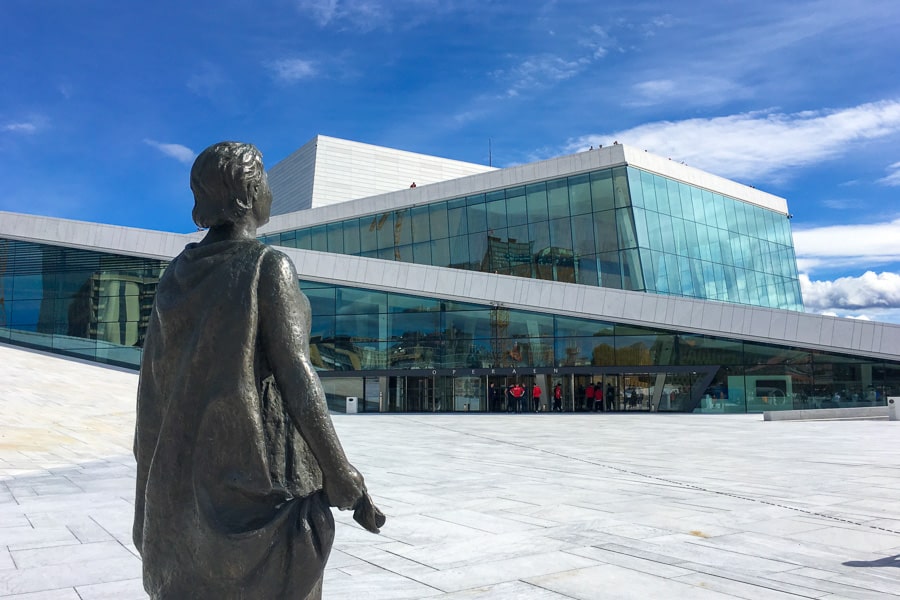
Fans of artist Edvard Munch might want to make a diversion at this point to pop into the nearby Munch Museum. However, if you want to see his most famous work, The Scream, we’ll get the chance later at the National Museum.
After lunch, head to Akerhouse Fortress, which has been guarding Oslo’s harbour since the 1300s. Take a tour if you have the time, or just have a wander through the grounds and enjoy the views.
Continuing around the harbour, you can’t miss Oslo’s distinctive red brick City Hall. It’s free to visit and houses some impressive Norwegian artworks and murals.
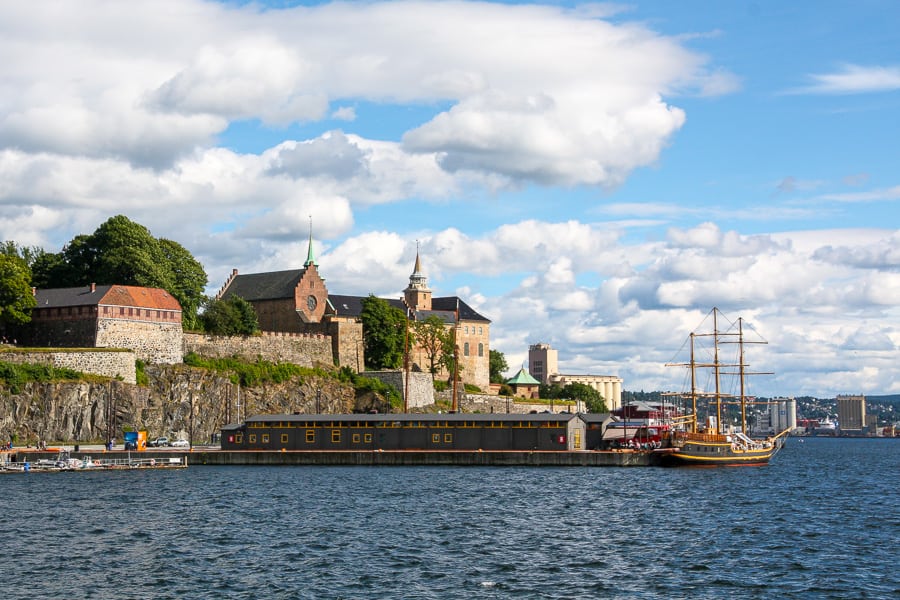
If you have the time and energy, the nearby Nobel Peace Center is a fascinating stop to make on the way to our second last stop today, the National Museum. The museum is home to the largest collection of Norwegian art, including The Scream – the iconic, angst-ridden masterpiece by Edvard Munch.
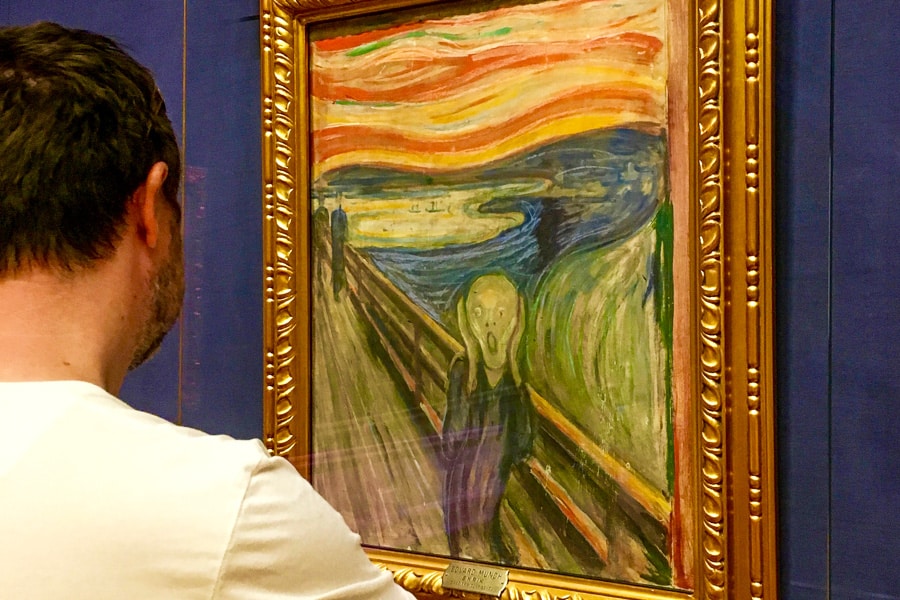
Finish day one of your Oslo itinerary by rewarding yourself with a beer at Beer Palace in Aker Brygge while you decide where to have dinner in this bustling waterfront district.
Day 2: Oslo’s Maritime Heritage and Vigeland Park
Explore Oslofjord
You’ve pounded the city streets by foot, so day two of our Oslo itinerary will get you out and about on the water while exploring some of Norway’s nautical heritage.
There are a multitude of ways to explore Olso’s waterways, from sightseeing cruises to kayaking tours, party or music-themed boats, and more leisurely dinner cruises.
Some of the most popular options we’ve found include:
- Guided Oslofjord Cruise by Electric Boat: A two and a half hour cruise of the fjord departing from Aker Brygge.
- Dinner Cruise on Oslofjord: Experience the fjord and city skyline in the evening while enjoying a three-course dinner with optional wine.
- Oslo Fjord Sightseeing Cruise by Sailing Ship: Explore the fjord on a 2 hour cruise aboard a traditional sailing boat with heated outside main deck.
We also discovered it’s possible to cruise around many of the inner islands of Oslofjord using the regular public ferry, the Båtservice.
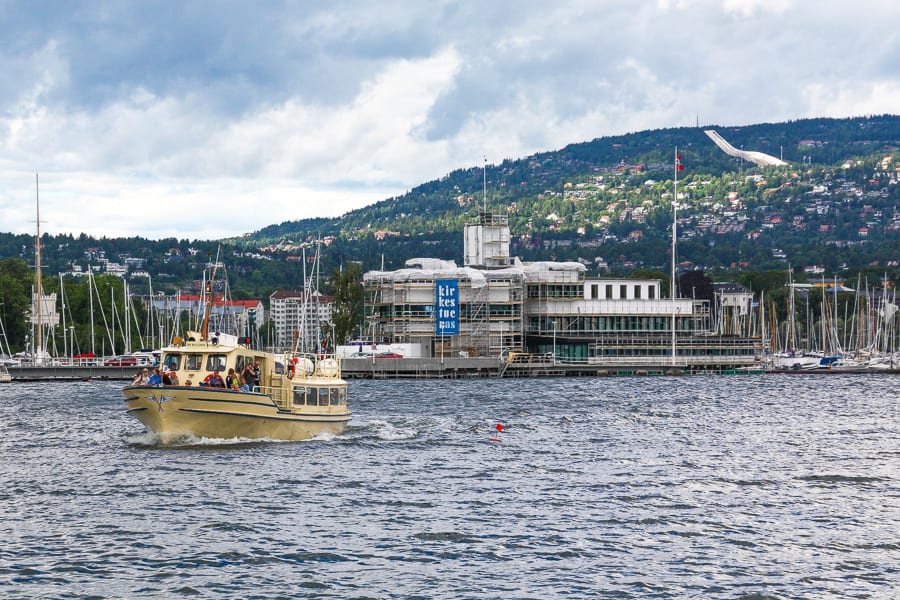
These charming rocky havens, speckled with summer cottages painted in primary colours, are a magnet for locals and visitors in the warmer months. The public ferries offer the chance to get off at an island that takes your fancy along the route for a swim and a picnic. With more time, and slightly warmer weather, we might have joined the throngs, but we were happy to hang out on deck and enjoy the rays (and the views).
Whatever you decide, be sure to plan some time cruising Oslofjord, and then plan the rest of today around that activity.
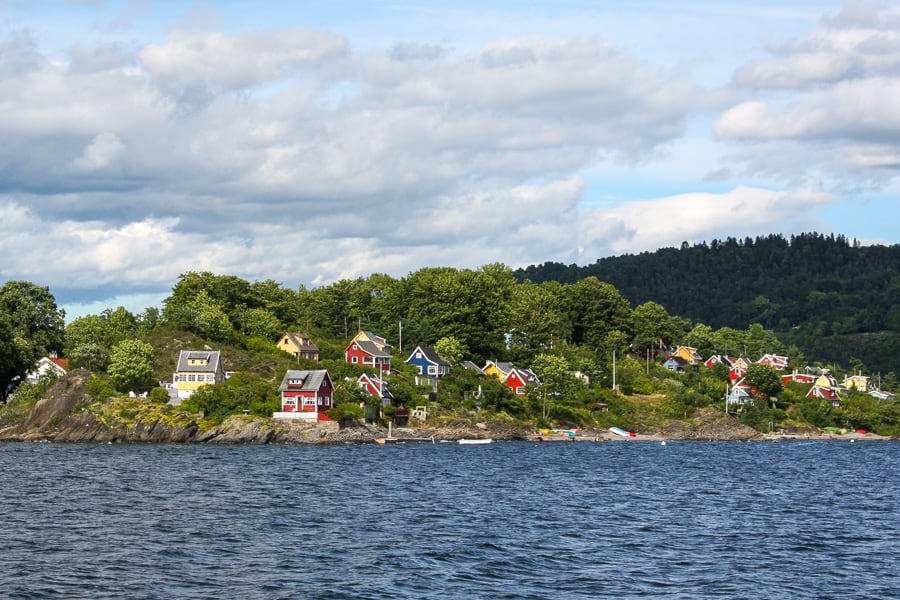
Museums of Bygdøy Peninsula
Apart from getting out on the water, our first major activity today is a trip to the Bygdøy peninsula, a leafy, unassuming residential suburb of Oslo with pretty white wooden houses, and a handful of truly outstanding museums.
Restoration of the Viking Ship Museum (reopening in 2027)
We’ll provide an overview of the Viking Ship Museum a little later, but will start with the bad news, the museum is currently closed for a full makeover.
While undoubtedly disappointing if you are planning to visit Oslo anytime soon, we’re actually pretty excited by this news.
Even though these perfectly-restored archaeological finds are very much the focus of any space they’re in, the old museum was a utilitarian hangar with little by way of information or interps. We’ll be very keen to head back for another visit when the museum reopens as the Museum of the Viking Age.
If you’re still after a dose of Viking era heritage though, head to the Historical Museum instead at some point over your two day stay.
Alternatively, if you want to spend more time on the Bygdøy peninsula, the nearby Norwegian Museum of Cultural History and Fram Museum are both included in the Oslo Pass and are well worth a visit.
Despite the Viking Ship Museum being closed for restoration the Bygdøy peninsula is a lovely spot to visit. Not only is the ferry to get there a great chance to get out and about on the harbour, but the peninsula also has a museum dedicated to perhaps the most tenacious man who ever lived. Just down the street from the viking ships is another maritime marvel, the Kon-Tiki Museum: a celebration of the dogged Norwegian explorer, Thor Heyerdahl.
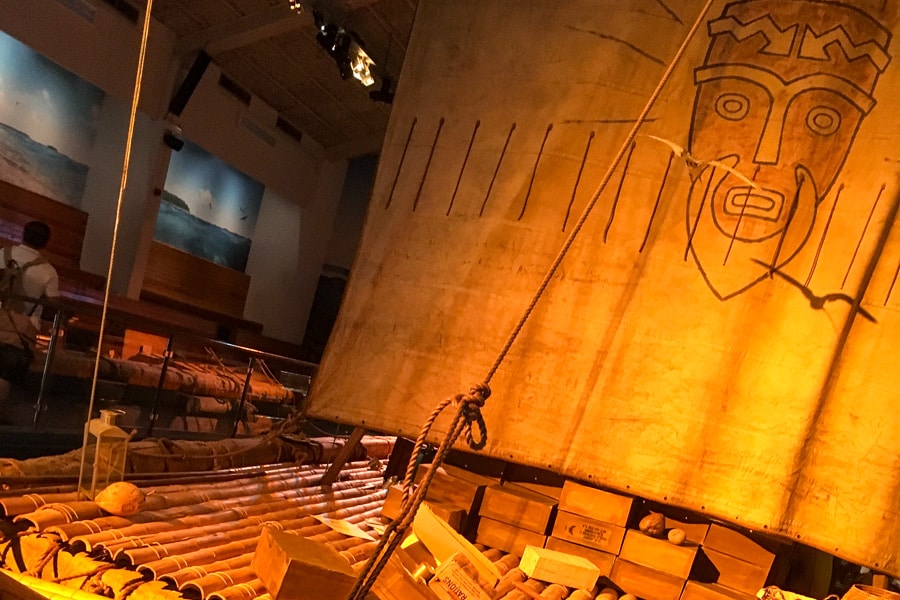
It’s worth a visit just to see the huge, original balsa wood and reed rafts Heyerdahl built for two of his audacious quests to prove theories about the sea-going capabilities of ancient peoples. The most famous, the Kon-Tiki raft, sailed 4,300 nautical miles from Peru to French Polynesia in 1947.
But Heyerdahl himself was an extraordinary man, a genuine explorer with an insatiable curiosity and a phenomenal self-belief. The museum is a monument to his single-minded determination. We couldn’t help but be impressed by the guy (and by his epically patient and supportive wives…perhaps unsurprisingly, he had three over his lifetime).
Tickets for the Kon-Tiki Museum can be purchased in advance here. You can also buy a combined ticket for the Kon-Tiki, Fram and Norwegian Maritime museums if you want to visit all three, just ask for details at one of the museums.
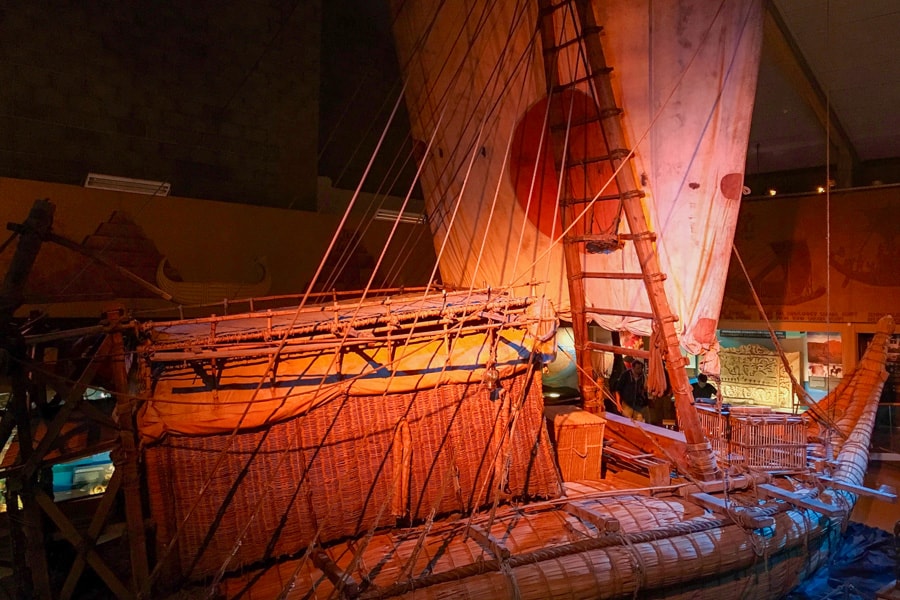
We’re looking forward to the Viking Ship Museum reopening as the Museum of the Viking Age in 2027. For us, seeing some of the best-preserved Viking ships in the world was one of our favourite things to see in Oslo. These are the real deal: expertly hand-crafted sometime between 800 and 900AD. And they are beauties.
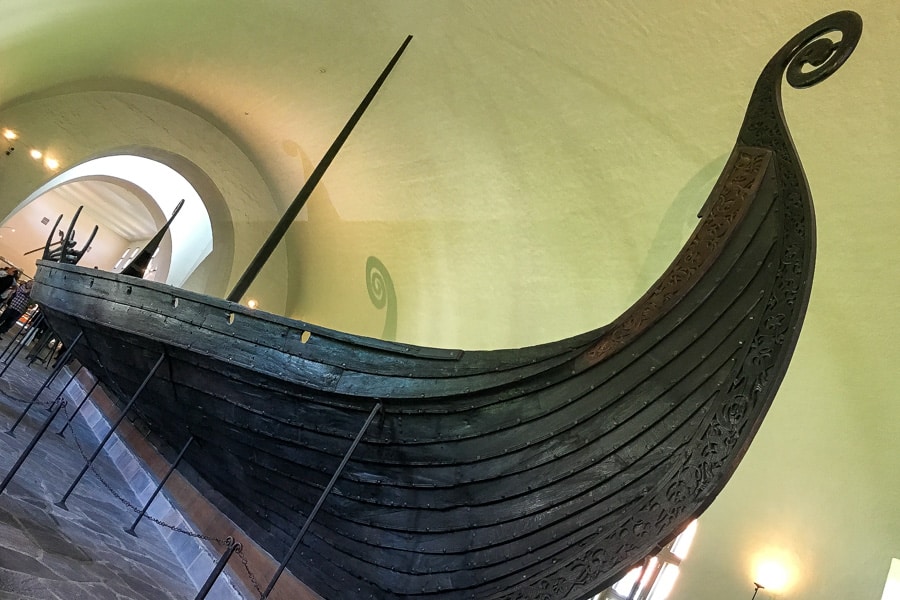
Two of the three wooden ships housed at the museum were discovered wholly intact in burial mounds in the late 1800s and early 1900s, about 90 minutes south of the city.
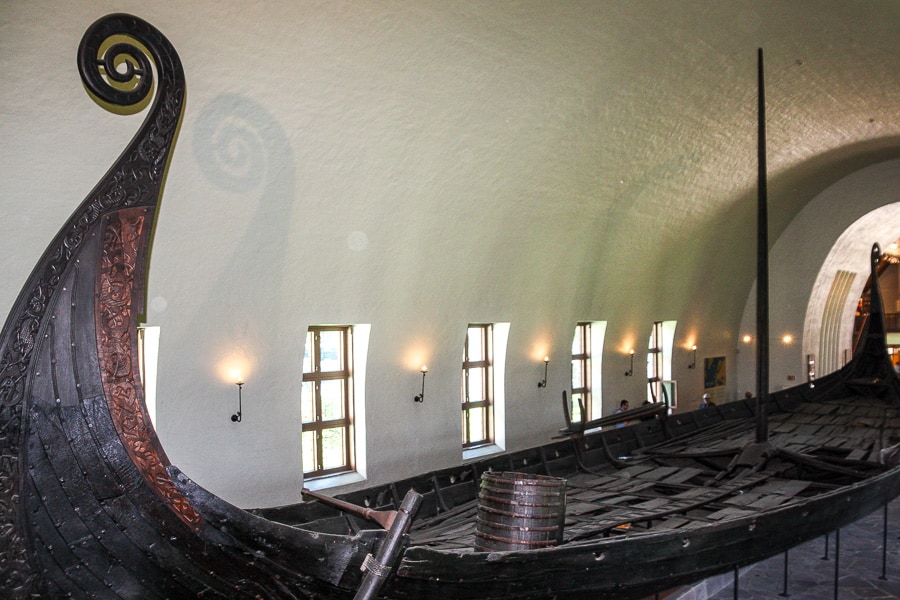
Vigeland Park
Back on the mainland, there’s a sea of sculpture to explore at Vigeland Park, the largest sculpture park in the world.
It’s also another testament to a man with a superhuman drive and obsession. The park was the lovechild of Gustav Vigeland, who not only designed the green space but filled it with 212 life-sized bronze and granite sculptures – all created by him, by hand, over a 20 year period.
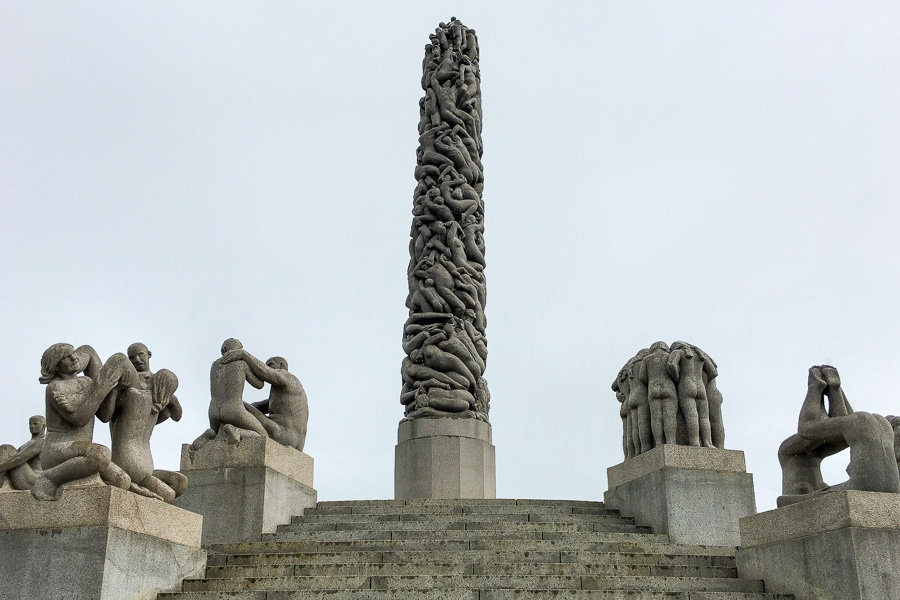
You can reach the park by foot, by tram number 12 from the city, or via the metro. Plan to spend a good while here meandering among the striking sculptures, and perhaps grab a coffee or snack at one of the park’s cosy corners.
If you love green spaces, we’re sure you’ll enjoy this one. We were completely taken with this park and loved every minute we had strolling among Vigeland’s creations.
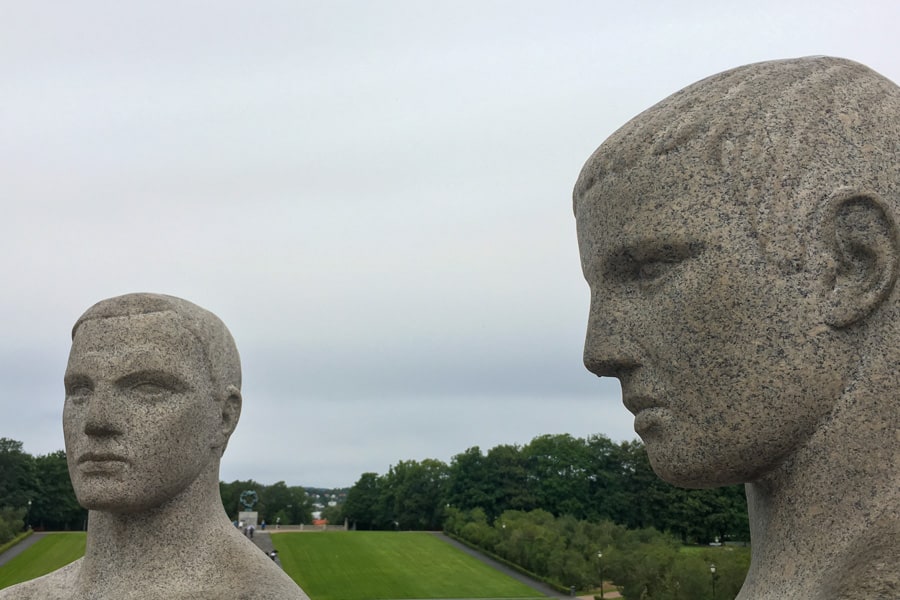
Wrapping Up Our Oslo Weekend
Unless you’ve booked a dinner cruise on the fjord, head back into town for more harbourside dining at Aker Brygge or Sørenga. If you’re feeling more energetic, jump on a tram to trendy Grünerløkka to enjoy some dinner, a few drinks and maybe some live music.
We’re sure you’ll find yourself reflecting on a memorable two days in Oslo over dinner. We certainly did on our last night here. Oslo is a refreshingly green city, with some big ticket cultural institutions.
For us though, the real draw was the blue harbour. It’s easy to see how the sea here has lured people to its shores throughout the ages. We enjoyed so much about Oslo, but it was the Oslofjord that truly won us over.
If you’ve got any questions about how to make the most of two days in Oslo, please let us know in the comments below.
If you’re interested in exploring more of Norway, check out our Norway Road Trip Itinerary, or the Norway page of this website.

Sadly my only visit to Oslo was at the end of a short work trip (albeit to a nice fjord side town with Viking ship but it’s name is forgotten) and I mostly sat in a cafe with my host after walking past the site of the Breivik bombing (as host worked in nearby office). However, I saw enough to know it’s a cool city that is quite unlike most capitals I’ve visited.
Sounds like it may be worth another visit Mik?
We certainly enjoyed our time in Oslo, with the Viking Ship Museum being a huge highlight for me.
Not too much rain about then ?
We actually had blue skies for most of the visit in Oslo!